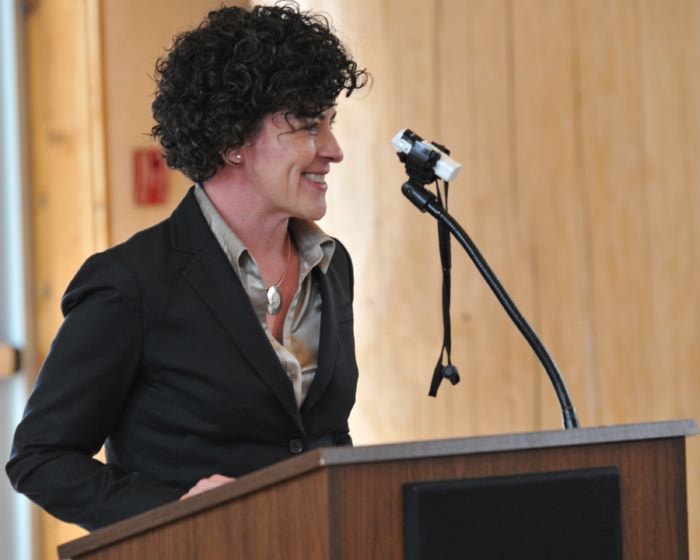MINING HAS expanded beyond business and profit, the president of the BC Mining Association told a luncheon here May 1.
Karina Brino said a new element – being socially responsible – has become an important part of one of the province's major industries.
Trained as a social worker, Brino said her current occupation allows her to pursue her passion of being involved with people.
“[It's] precisely to deal with the issues that are at the core of our society,” she said.
Mining's economic and financial foundations provide the ways and means for careers and jobs, education, access to health care, food, shelter and child care, Brino said.
“We can't be a responsible country or a responsible society if we don't ensure we have the right elements,” she said to the luncheon audience at Northwest Community College.
And with B.C.'s mineral rich environment, mixed with environmentally and socially responsible business practices, and government approval, those elements can be created she said.
In 2010, the mining sector contributed $8.9 billion to the province's economy, creating 45,000 jobs direct and indirect jobs. Of that total, more than 8,000 were at mine sites.
The mining sector includes not only full operational mines, but exploration as well.
In the last 18 years, only one mine has received the necessary string of approvals to reach full operation, she said.
There are as many as 11 mineral properties in northern BC at one stage or another of exploration, advanced exploration and environmental approval.
Collectively, their combined capital cost would be approximately $18 billion.
“You're looking at ... in excess of 6,000 jobs,” said Brino. “How do we actually deal with some of the socio economic issues we have in our community? The best way to do that is by providing opportunities for them.”
The mineral developments include Red Chris, Galore Creek, Kitsault, Tulsequah Chief, Kutcho Creek, Schaft Creek, Turnagain, Mount Klappan, Morrison and KSM.
With the construction of the Northwest Transmission Line up Hwy37 North, mineral development becomes more feasible because of the availability of reliable power.
As a separate development, the refitting of Rio Tinto Alcan's Kitimat aluminum smelter is costing $3.3 billion.
Brino said mining sector jobs pay more than the median family income which in BC in 2009 was $66,700.
But she also said a profitable mining sector does face the challenges of lengthy environmental and other reviews, complex First Nations, finding an available and trained workforce and having sufficient railways, ports and power.
It's a balance to get there, and that process will take acknowledging shortcoming while having the courage to overcome them, she said.
Companies need to subscribe to a set of guiding principals, supported by performance, and indicators which companies can measure to and report annually.
These indicators include First Nations and community outreach, biodiversity, health and safety, tailings management, energy management, crisis communications, closure and water management.
“We need to have conversations about how we are going to do it, instead of if we are going to do it,” said Brino.
The luncheon was sponsored by the City of Terrace, Imperial Metals and the Mining Association of BC.
